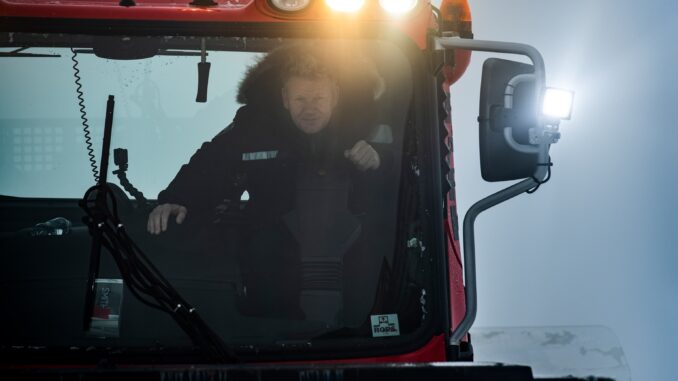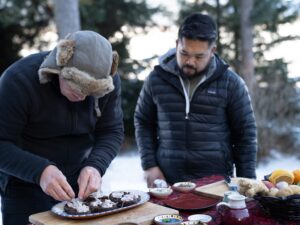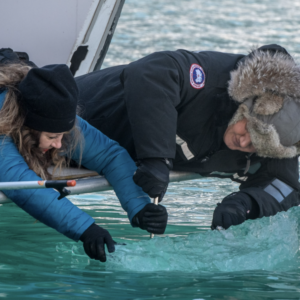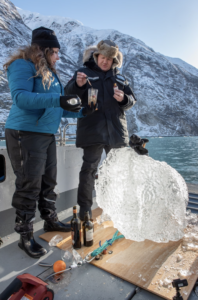
In the harsh conditions of southeast Alaska, Gordon learns how locals have adapted over the years to create their delicious local cuisine.

Hanging on a rope halfway up a 60-foot rock pillar on an island in Southeast Alaska in the middle of a snowstorm, Gordon Ramsay scrambles to keep his footing. “There’s got to be an easier way for a cup of tea,” he says, out of breath, while focusing on the goal: spruce trees at the top of Chimney Rock. Hanging from their branches is old man’s beard, a lichen with antibacterial, antifungal, and antimicrobial properties. The lichen, along with fresh spruce tips from the same trees, are used in Alaskan cuisine.
“Oh there is,” says Alan Gordon, local climbing expert. “I just thought this would be fun.”
The panhandle of Southeast Alaska is often considered “America’s last frontier.” Here, residents hunt, fish, and forage for the food that will sustain them through the cold and bleak winter. It’s all about survival. To get the freshest food in Alaska, smart residents know where to find their ingredients. Chef Lionel Uddipa has gained a reputation for creating incredible flavor combinations from wild ingredients, and is the executive chef of Salt Restaurant in Juneau.

While foraging and hunting are time-honored traditions in the Tlingit community and other Alaska Native cultures, the vast territory of Alaska makes it a challenge for people living remotely to access food easily and consistently—especially when weather conditions and geographical terrain add more challenge.
“When Alaska turns green, that’s when we do a lot of our foraging, hunting, and fishing, and we try our best to preserve those ingredients through the winter,” says Uddipa. Whether it’s mushrooms, salmonberries, cloudberries, spruce tips, devil’s club, mountain strawberries, or beach asparagus, much of the food that’s foraged in the morning is often served that night or immediately incorporated into herbal medicines. The same goes for wild-caught fish or hunted game. But Alaskans have to keep the entire year in mind, and preserve some of the bounty for times when it’s not plentiful.

The old man’s beard that Ramsay foraged from the top of Chimney Rock has already been made into tea, but the spruce tips—which are packed with vitamin C and contain carotenoids, potassium, and magnesium—are used in everything from salads to stews. There’s a small window to pick the fresh shoots in spring, and those that aren’t used immediately can be kept in the freezer for later use. An essential element of foraging spruce tips for Alaska Native cultures is to harvest respectfully, which means thanking the tree for giving up some of its tips and always harvesting in moderation.

“I’m actually going to cure that in the snow. Who needs a refrigerator in this temperature,” says Ramsay, of his gravlax dish for the Big Cook, with freshly caught king salmon in a marinade of spruce tips, juniper berries, and Juneauper Gin—made by the local Amalga Distillery. It’s not a regular practice for a chef to battle with the elements, but the nature of Alaskan survival is essential to what Ramsay wants to highlight on Uncharted.
